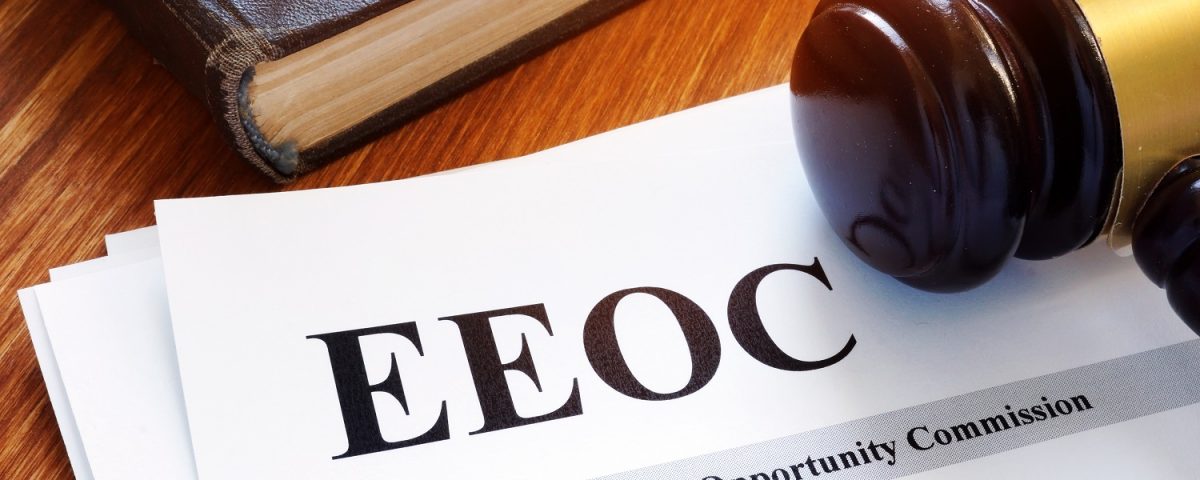Workplace Discrimination Complaints Are Rising

New Protections for Domestic Workers in New Jersey
June 3, 2025
Crackdown on Non-Compete Agreements
June 17, 2025Discrimination and harassment in the workplace are growing, persistent issues. According to the U.S. Equal Employment Opportunity Commission (EEOC), over 88,000 new charges of employment discrimination were filed in 2024, marking a 9.2% increase over the previous year.
My name is Ty Hyderally, and I’ve been practicing employment law in New York and New Jersey for over 20 years. These numbers reflect what I’ve seen firsthand: more people are stepping forward, more legal protections are in place, and both employees and employers are feeling the impact.
In this post, I’ll walk you through what’s behind the surge, what it means for your workplace, and how to protect your rights whether you’re an employee or an employer.
About the Author
Ty Hyderally is a respected employment law attorney based in Montclair, New Jersey. He is the principal of Hyderally & Associates, a law firm focused on employment-related legal matters such as:
With decades of experience in representing both employees and employers, Mr. Hyderally is frequently sought out for his deep understanding of New Jersey labor law, including his perspective on the rising number of workplace discrimination complaints.
How Much Have Discrimination Complaints Increased?
The EEOC received 88,531 new discrimination charges in fiscal year 2024, marking a 9.2% increase from the year before. That followed a 10% increase between 2022 and 2023, which means a continuing trend of significant growth.
These rising numbers don’t necessarily mean discrimination is getting worse. More likely, it means more people are recognizing it, naming it, and reporting it. Filing a charge with the EEOC is a serious step that many workers wouldn’t have considered in the past. That might have been due to fear of retaliation, language barriers, lack of access to legal resources, or simply not knowing they had legal protections.
Now we’re seeing that change. Awareness is growing, legal protections are expanding, and workers are increasingly empowered to report behavior they may not have in the past.
In 2024, the most common categories of discrimination included:
- Pregnancy and postpartum discrimination – especially when employers failed to accommodate workers under the Pregnant Workers Fairness Act
- Race and gender-based harassment – ranging from offensive comments to hostile work environments
- Disability discrimination – including failure to provide reasonable accommodations and bias related to conditions like Long COVID
- Retaliation – after an employee filed a complaint, requested medical leave, or reported misconduct internally
It’s been interesting to watch this shift happen in real time. Employees are less hesitant to speak with an attorney. They’re documenting conversations, saving emails, and researching their rights before they ever file a claim.
What’s Causing the Rise in Harassment Claims?
Workplace harassment continues to be one of the most frequently reported forms of discrimination. Over the past few years, I’ve seen a sharp uptick in these cases coming through my office.
Education is a huge driving factor behind this increase. More employees are learning that unwanted sexual advances, racially charged jokes, bullying based on gender identity, or repeated verbal abuse tied to a disability all contribute to harassment.
Legal developments have played a big role, too. The EEOC has updated its guidance on workplace harassment, and laws like the Pregnant Workers Fairness Act have expanded protections for overlooked groups. The cultural climate has shifted, and when society changes its view on what’s acceptable, so does the legal system.
The pandemic also changed how harassment shows up. In remote and hybrid environments, I’ve handled cases involving inappropriate messages, exclusion from virtual meetings, and retaliation disguised as restructuring.
In 2024, harassment claims covered a wide range of behaviors:
- Sexual harassment, including unwanted touching, comments, or coercion
- Racial and ethnic slurs, sometimes masked as jokes
- Bullying tied to gender identity or sexual orientation
- Repeated denials of accommodations for mental health conditions
- Retaliation after making internal complaints about harassment
When I speak to clients who’ve been harassed at work, one of the first things I tell them is: you’re not overreacting. Harassment doesn’t have to be physical or extreme to be illegal. It just has to create a hostile or abusive work environment. That’s the kicker, more and more people are realizing the threshold for that is lower than they think.
Systemic Discrimination: A Growing Legal Focus
While individual complaints often grab headlines, systemic discrimination cases are gaining traction. These aren’t isolated incidents between one employee and one supervisor. They’re patterns of bias that affect entire groups of workers across a company, industry, or region.
In 2024, the EEOC resolved 16 systemic discrimination cases, securing nearly $24 million in relief for over 4,000 individuals. These cases often involve:
- Biased hiring algorithms that screen out older applicants or non-native English speakers
- Pay disparities that persist across gender or racial lines, even within the same roles
- Blanket disability exclusions in job applications or medical screening processes
- Company-wide failures to provide accommodations for pregnant or disabled workers
- Discriminatory discipline policies that disproportionately impact employees of color
I’ve worked on cases where systemic problems were hidden in plain sight, until someone took a closer look at the numbers. Sometimes it’s not about what’s written in a handbook. It’s about patterns: who gets hired, who gets promoted, who gets disciplined, and who’s the first to be laid off.
Systemic cases are complex, requiring deep data analysis, access to internal company documents, and often testimony from many employees. But they also have the power to drive lasting change through new hiring standards, revamped HR training, or external monitors to enforce reforms.
If you’re an employee who’s seen the same unfair treatment play out repeatedly, the problem may be bigger than your personal experience. If you’re an employer, review your practices for unintentional but reproducible disparities. They could turn a complaint into a class action or federal investigation.
Who’s Filing the Most Complaints?
One of the most encouraging shifts I’ve seen is who’s coming forward. More workers from vulnerable and underserved communities are filing complaints and asserting their rights. These are people who might have stayed silent due to fear, language barriers, immigration concerns, or lack of awareness.
The EEOC made expanding outreach to these communities a major priority in 2024. Through nearly 1,100 targeted events, the agency reached over 127,000 individuals in groups historically underrepresented in workplace legal actions.
In my practice, I’ve seen a steady increase in calls from:
- Immigrant workers, particularly in service, healthcare, and warehouse industries
- Pregnant and postpartum employees unsure of their legal entitlements
- Non-English speakers now accessing translated resources and legal support
- Farmworkers and rural laborers whose geographic isolation once kept them out of the legal system
- Workers with physical or mental disabilities navigating accommodation requests
The EEOC changes constantly. Now, it provides interpretation in over 200 languages, has translated key documents into many dialects, and launched media campaigns reaching over 46 million listeners in both Spanish and English.
When I speak to clients from these backgrounds, I explain not just what the law says, but how the process works. Empowerment comes from clarity. It’s powerful and moving to see someone realize they don’t have to deal with discrimination just to keep their job.
What Employers in NY and NJ Need to Do Now
If you’re an employer in New York or New Jersey, think about these rising numbers as a call to action. Look at your workplace practices, training protocols, and response systems.
Prevention is not just good ethics. It’s good business, too. Once a complaint is filed with the EEOC or state agencies, it sets off a formal process that can quickly become expensive, time-consuming, and public.
Here’s what I recommend every employer in NY and NJ start doing now:
- Review and update anti-discrimination policies to reflect current federal, state, and local laws—including new protections.
- Conduct regular, comprehensive training for both managers and staff that’s specific to your industry and workforce demographics
- Audit your hiring, promotion, and compensation data for patterns and disparities across race, gender, or age
- Establish clear complaint procedures and ensure employees know how to use them without fear of retaliation
- Document your efforts including changes, training, and internal investigations—this documentation could be critical later
I’ve worked with employers who assumed “we’ve never had a complaint, so we must be doing fine.” But silence doesn’t always mean compliance. Sometimes it means employees don’t feel safe enough to speak up.
Businesses that build workplace cultures rooted in fairness, transparency, and legal compliance don’t just avoid lawsuits. They attract and keep better talent and build reputations that hold up in court and public opinion.
What If You’re Facing Discrimination at Work?
If you’re dealing with harassment, unequal treatment, or retaliation at work, heed these words: you have rights, and you don’t have to face this alone.
I’ve represented countless employees who thought they had to “put up with it.” They were afraid of losing their jobs, being labeled a troublemaker, or being ignored altogether. But the law is on your side, and more resources are available than ever before.
Here’s what I tell anyone experiencing workplace discrimination to do:
- Document everything. Keep a written record of what happened, when, who was involved, and how you responded. Save emails, texts, or other communications. This documentation often becomes critical evidence.
- Understand your rights. Federal laws like Title VII, the Americans with Disabilities Act, and the PWFA protect you from many forms of discrimination. New York and New Jersey have even broader protections, including coverage for sexual orientation and gender identity.
- Consult with an employment lawyer. Every situation is different, and not every bad experience at work is a legal violation. But when it is, an attorney can help you navigate the process, determine your options, and protect you from missteps.
- Act promptly. Filing deadlines are strict. For federal claims, you typically have 180 or 300 days from the discriminatory act to file with the EEOC. New York and New Jersey have their own deadlines, sometimes shorter for public sector workers.
One of the most empowering things I’ve seen is when a client realizes they’re not powerless. When they see there’s a process, their story matters, and they can hold someone accountable.
If something doesn’t feel right at work, trust your instincts. Discrimination often hides behind vague justifications. Sudden performance issues, policy changes, or arbitrary treatment that never seems to affect anyone else among them.
A Shifting Workplace Culture
The rise in workplace discrimination complaints reflects a shift. More employees are standing up, and more employers are being held accountable. As someone who’s practiced employment law for over two decades in New York and New Jersey, I see this as a moment of both challenge and opportunity.
If you’re an employee, know that the law protects you—and help is available. If you’re an employer, now is the time to strengthen your policies, training, and culture before issues arise.
At its core, this work is about fairness. Whether you’re asserting your rights or building a more equitable workplace, I’m here to help you take the next step with confidence.


